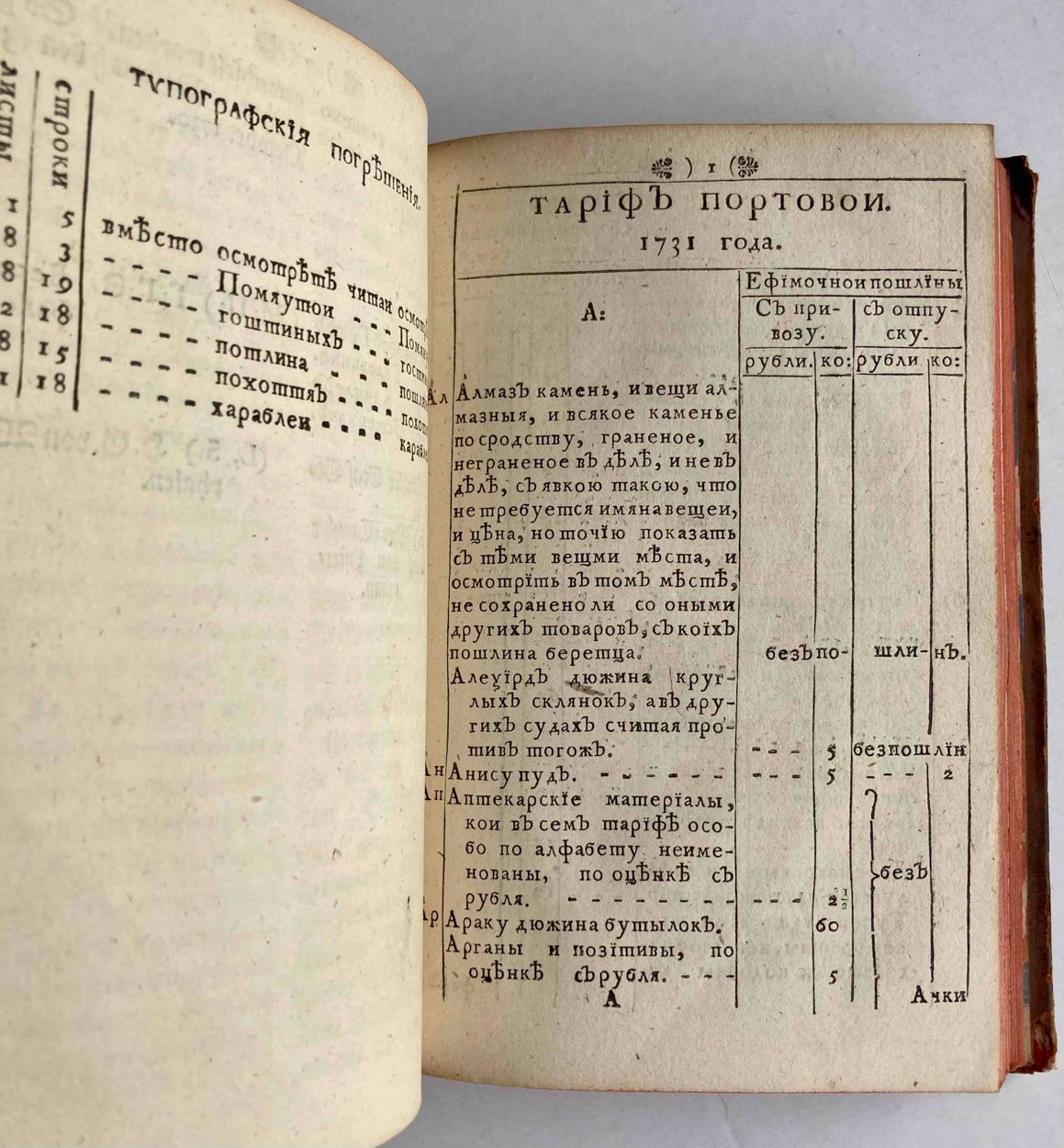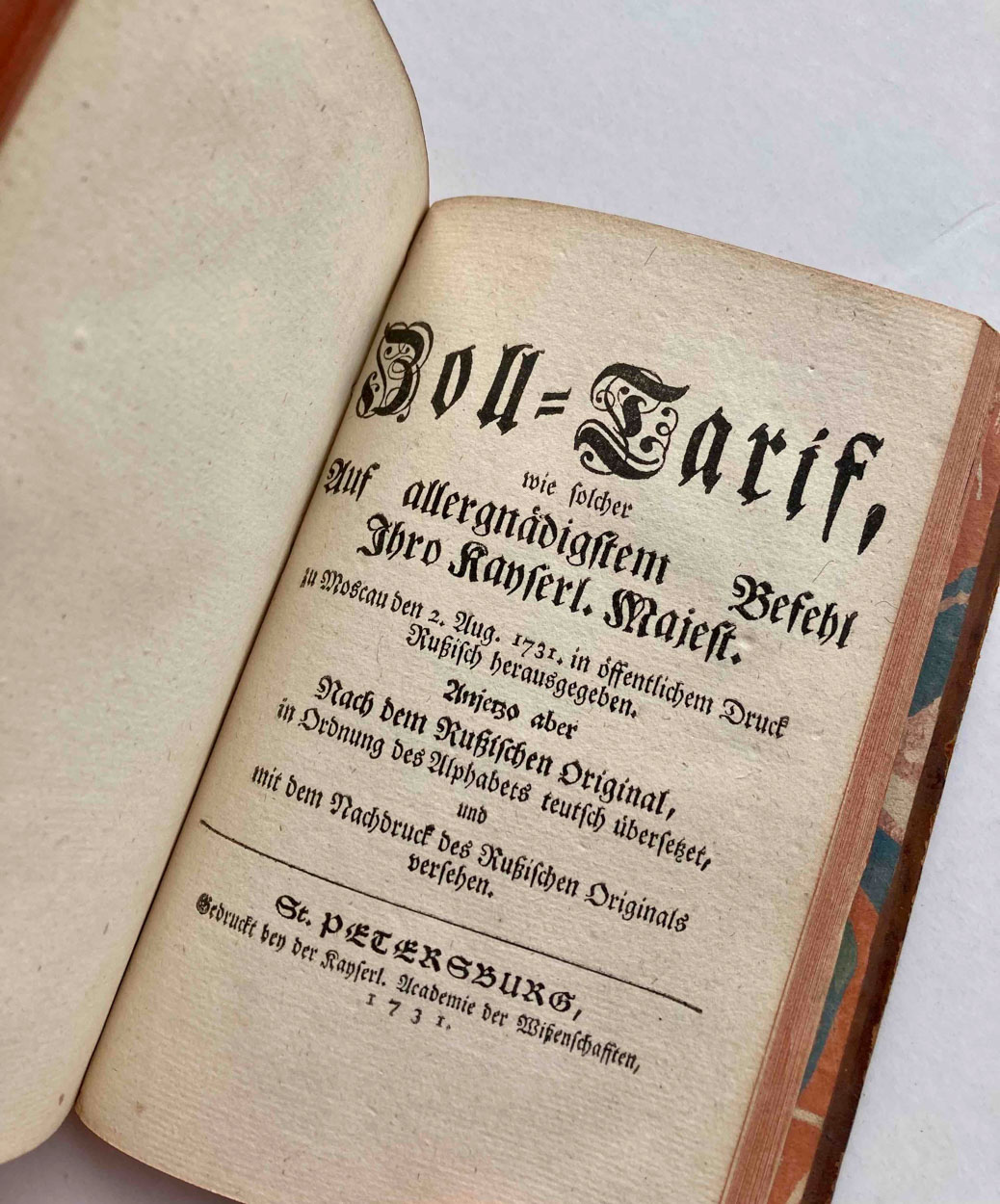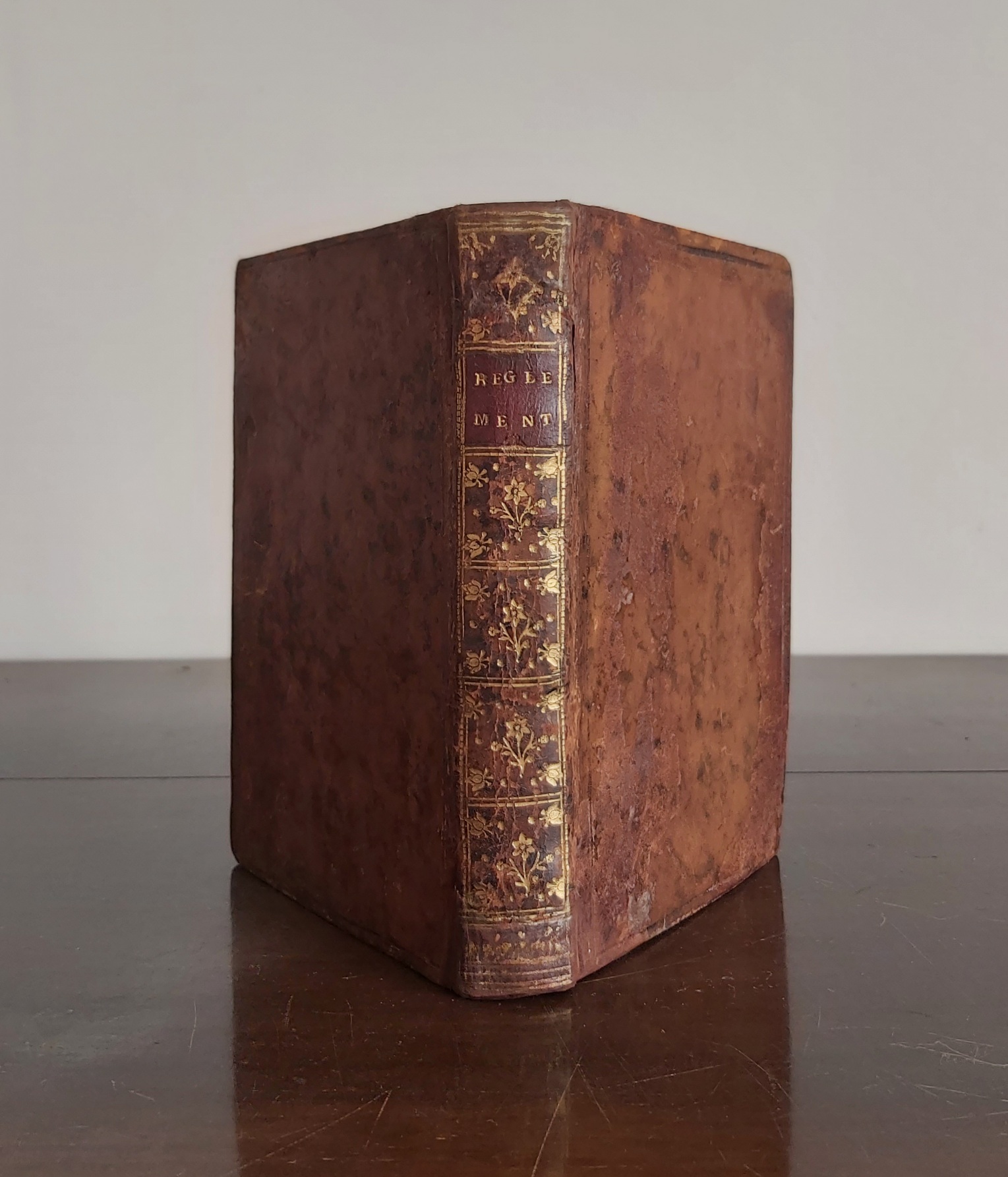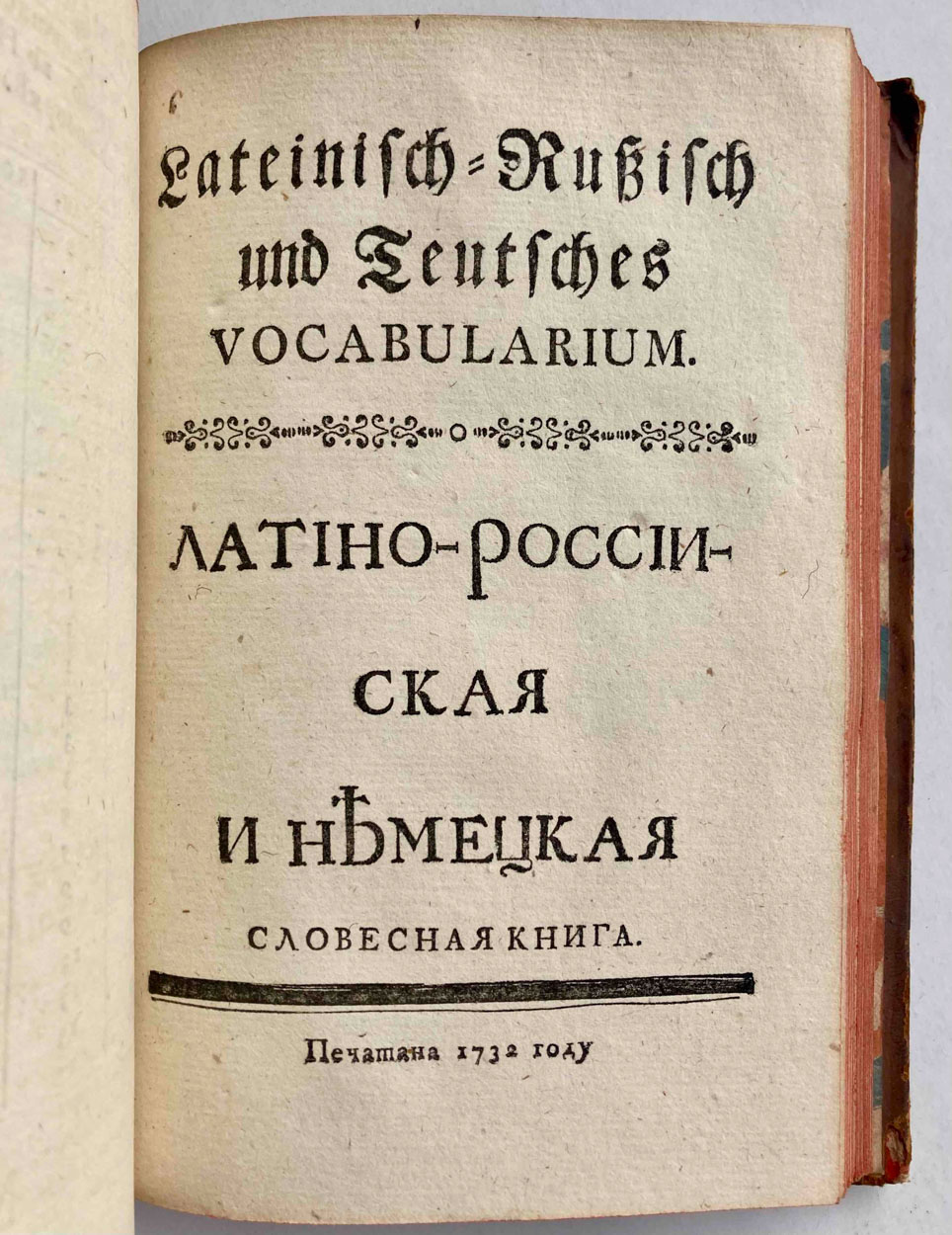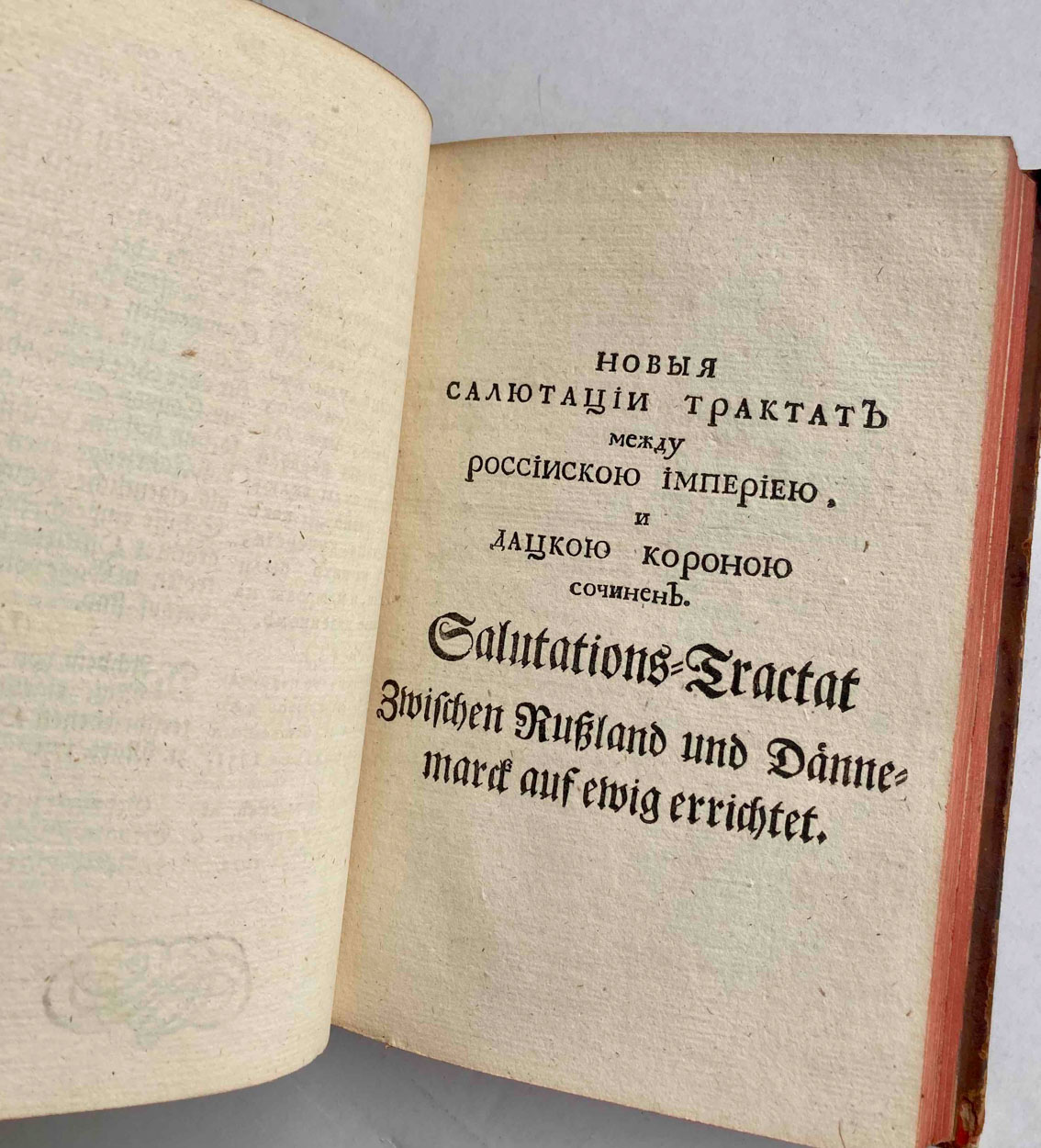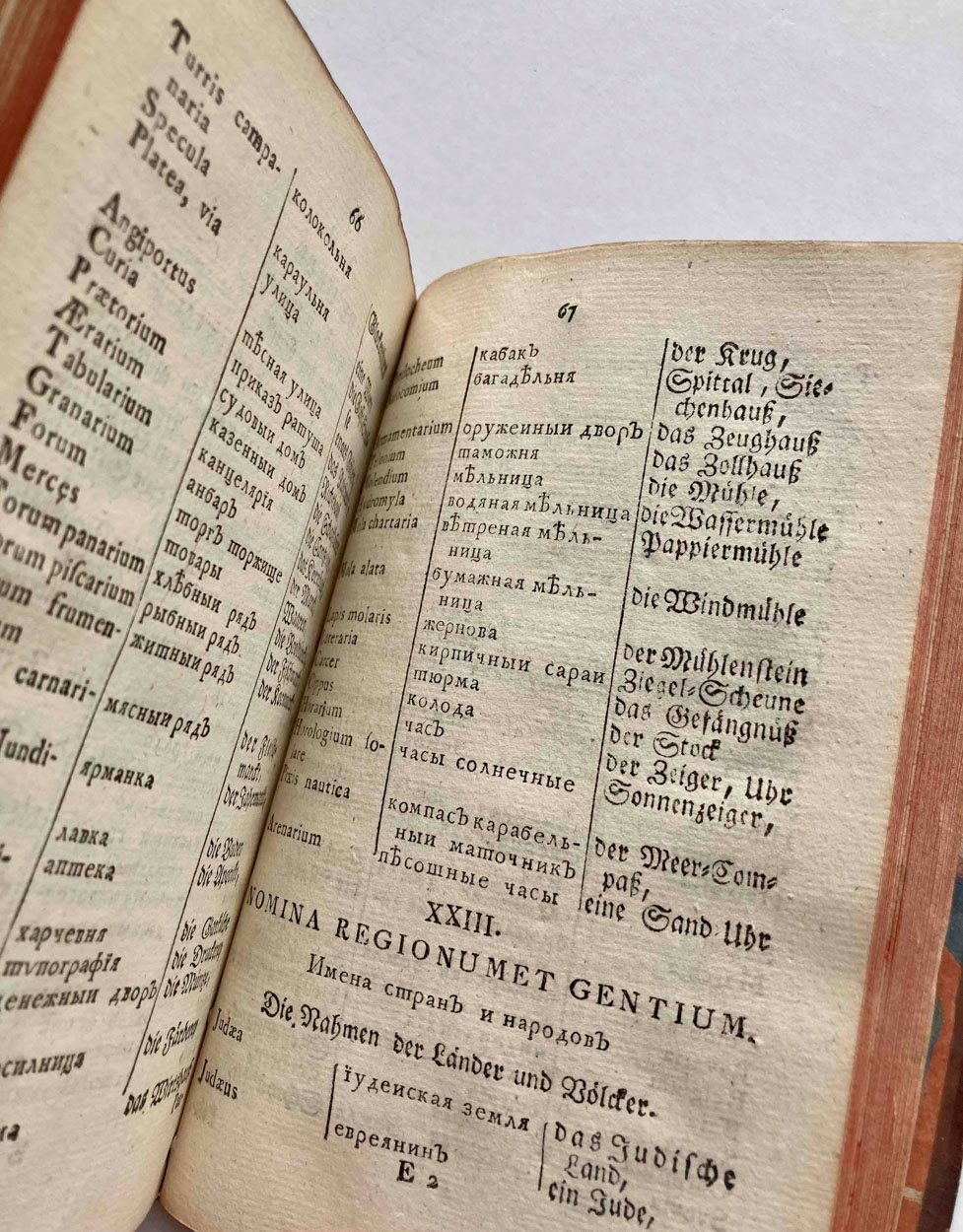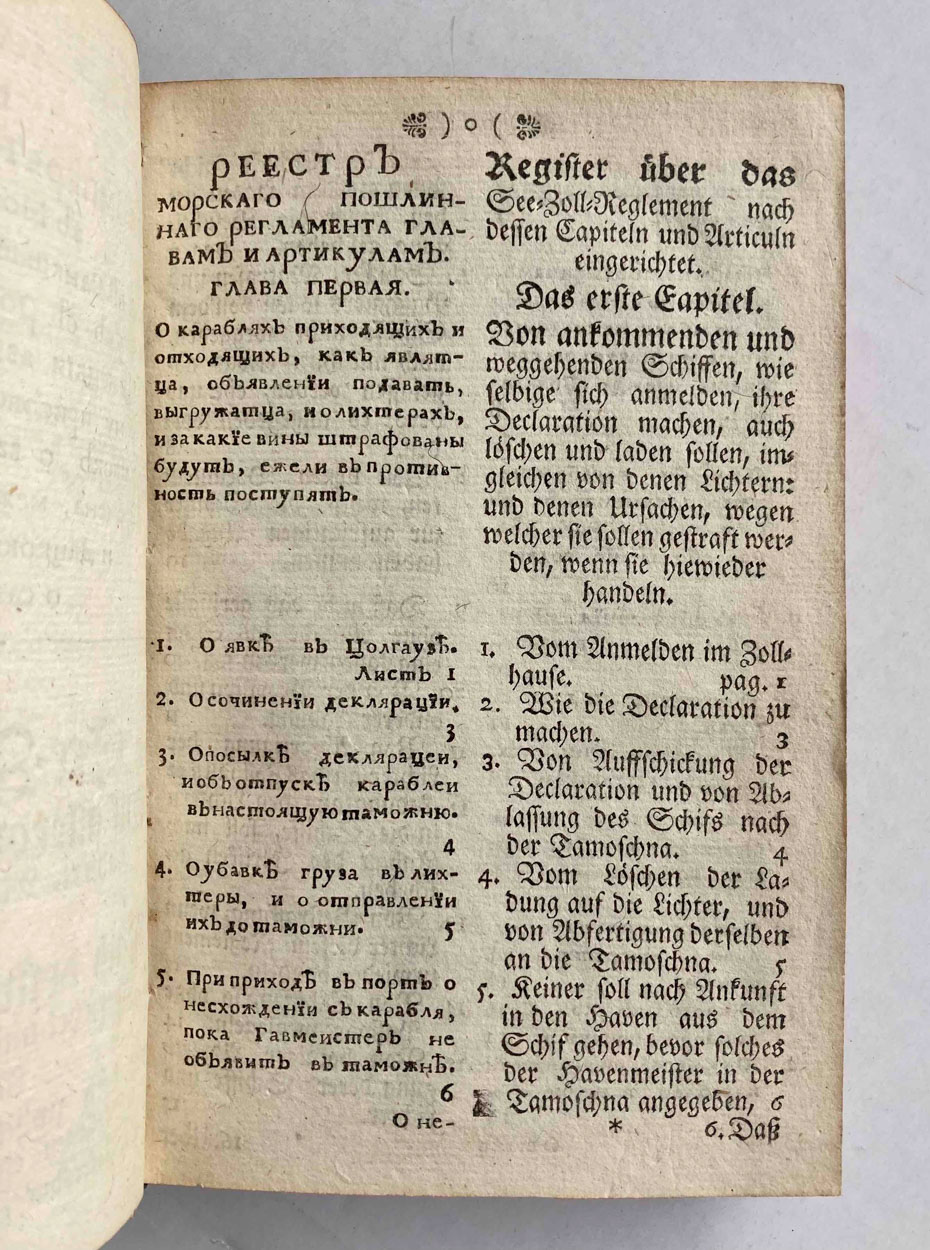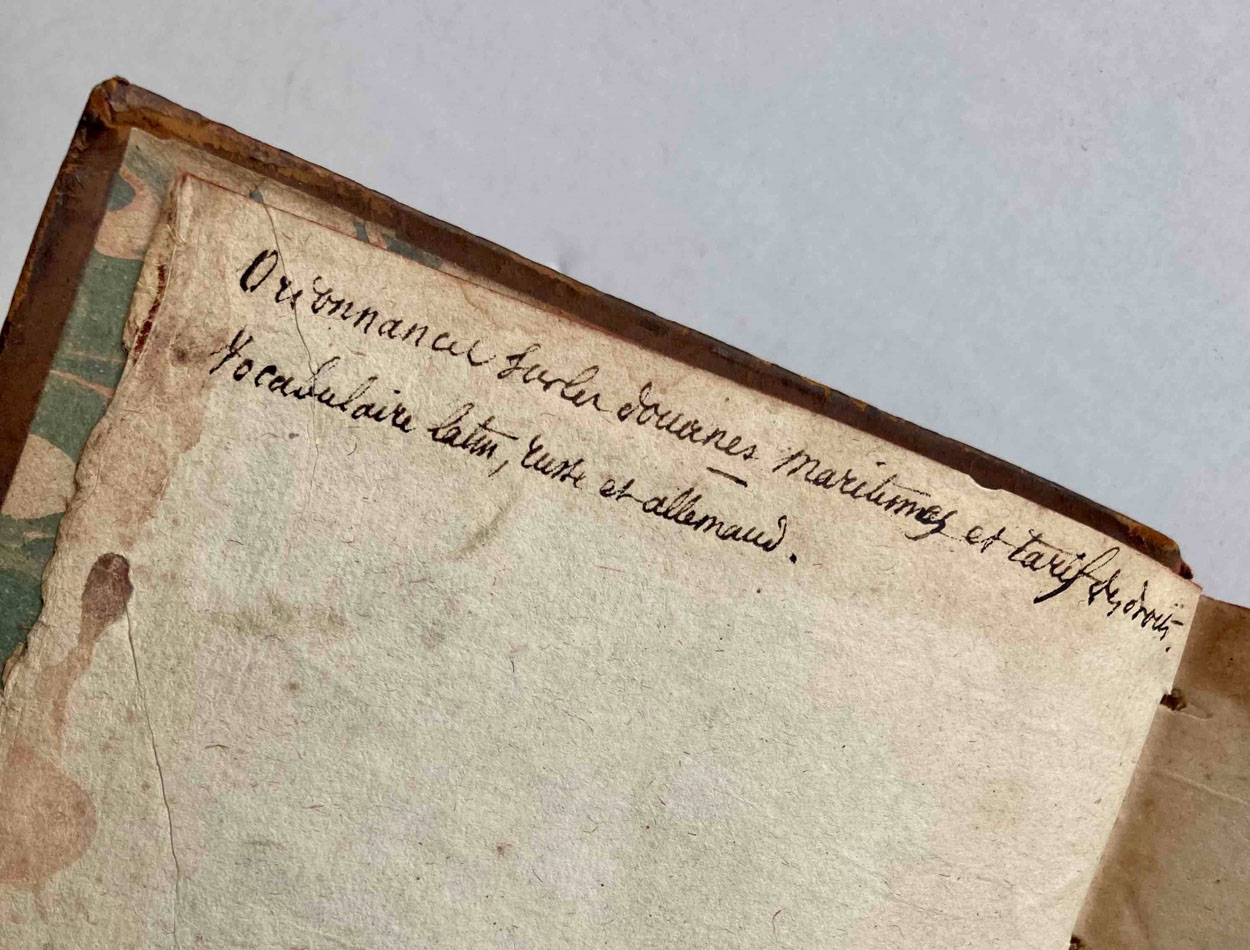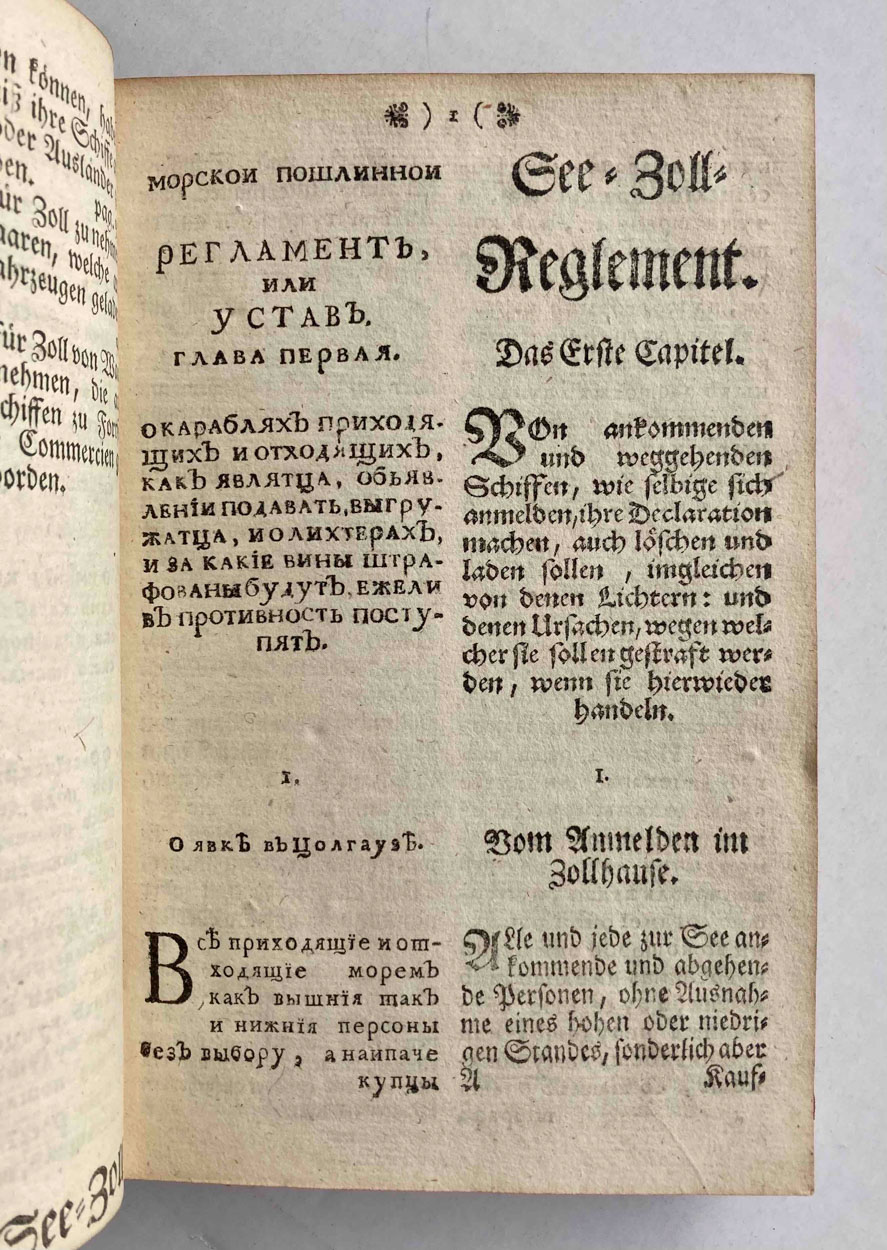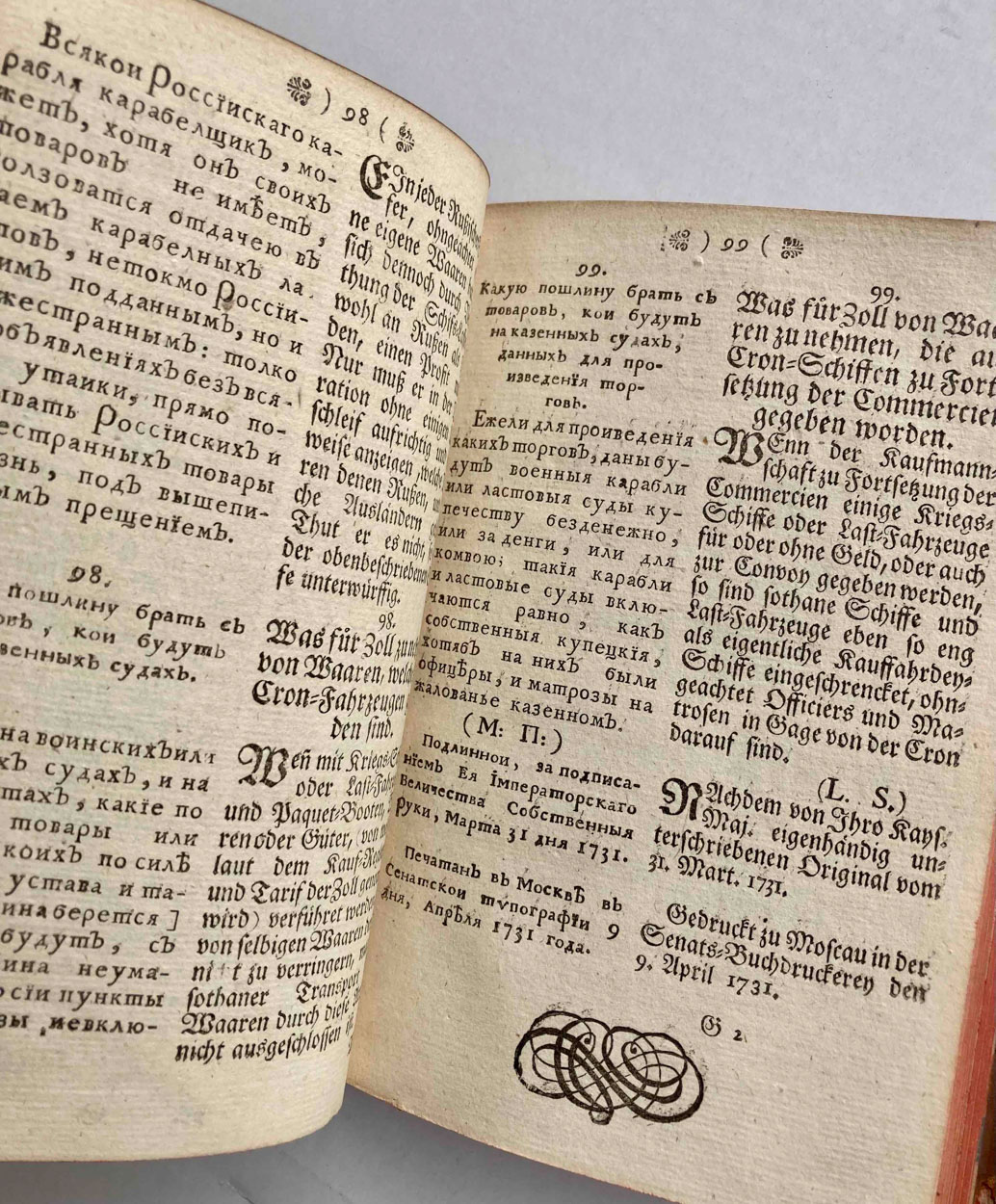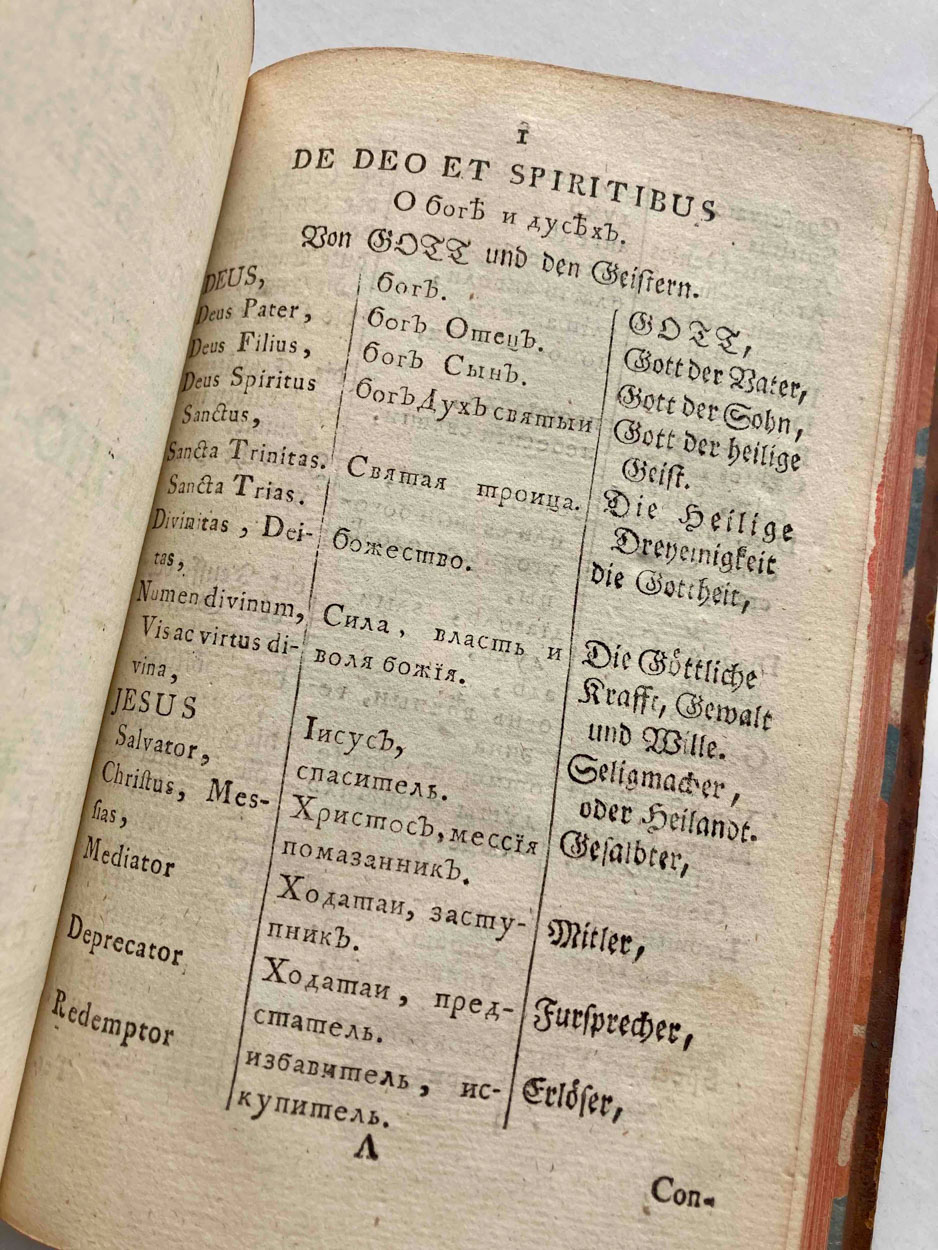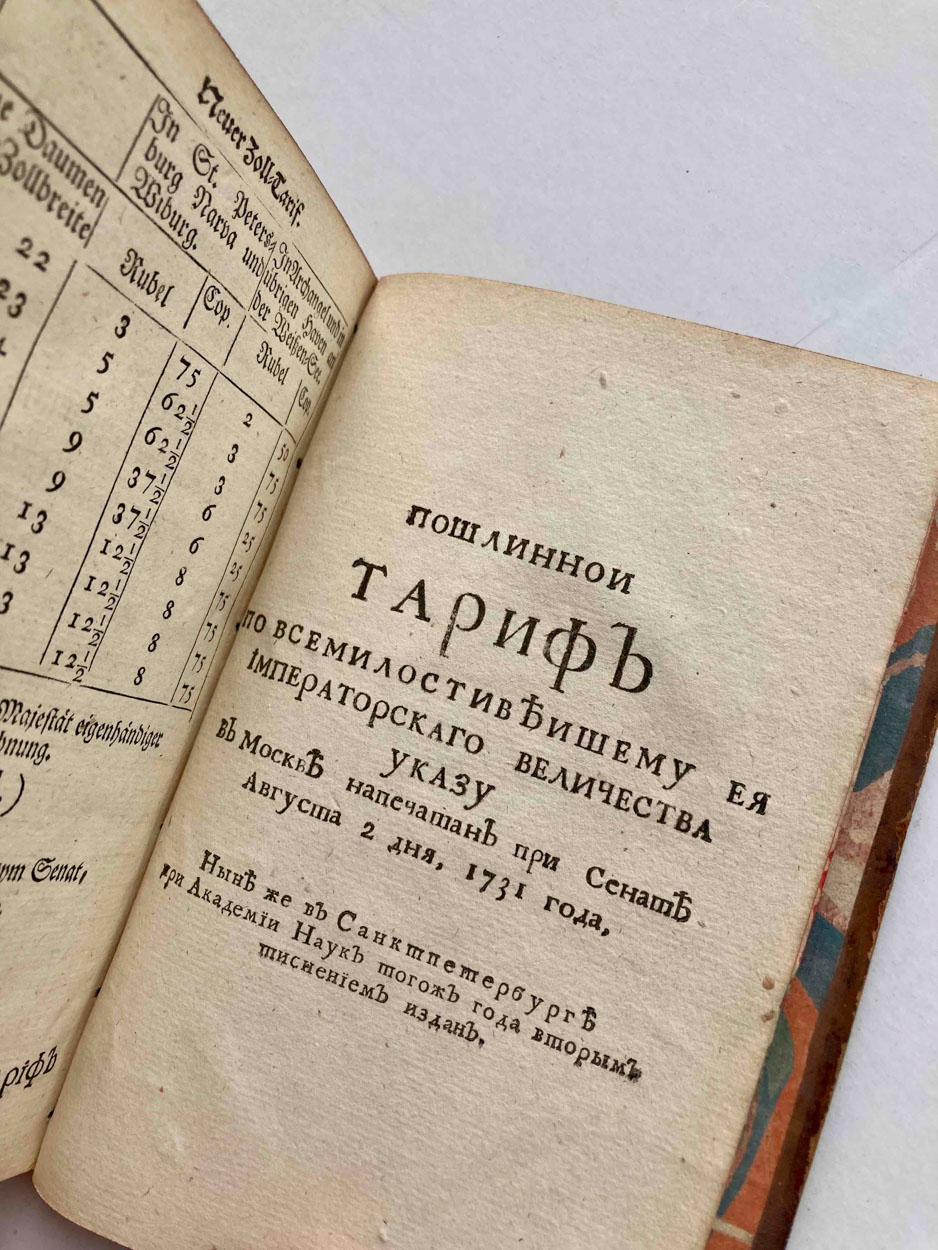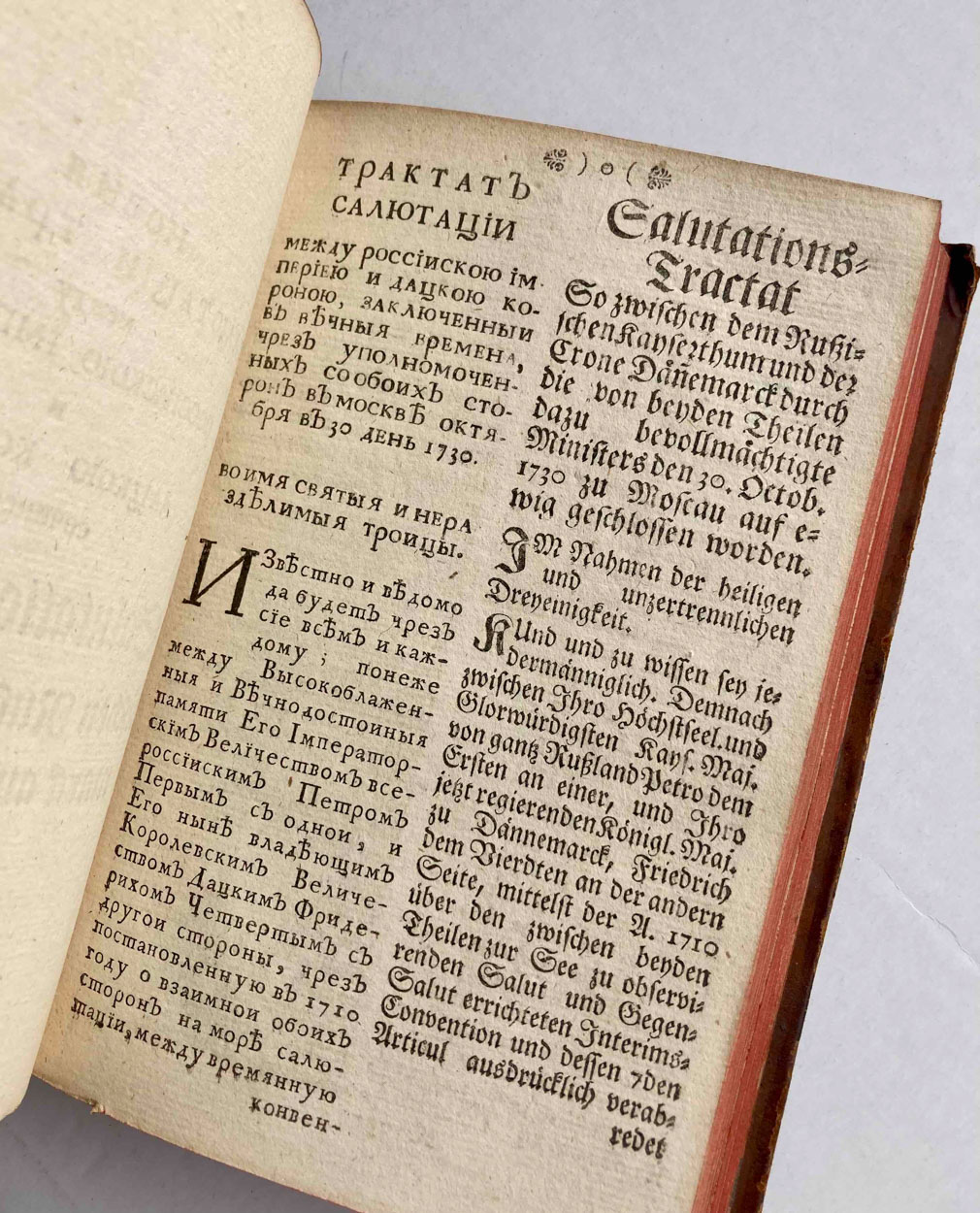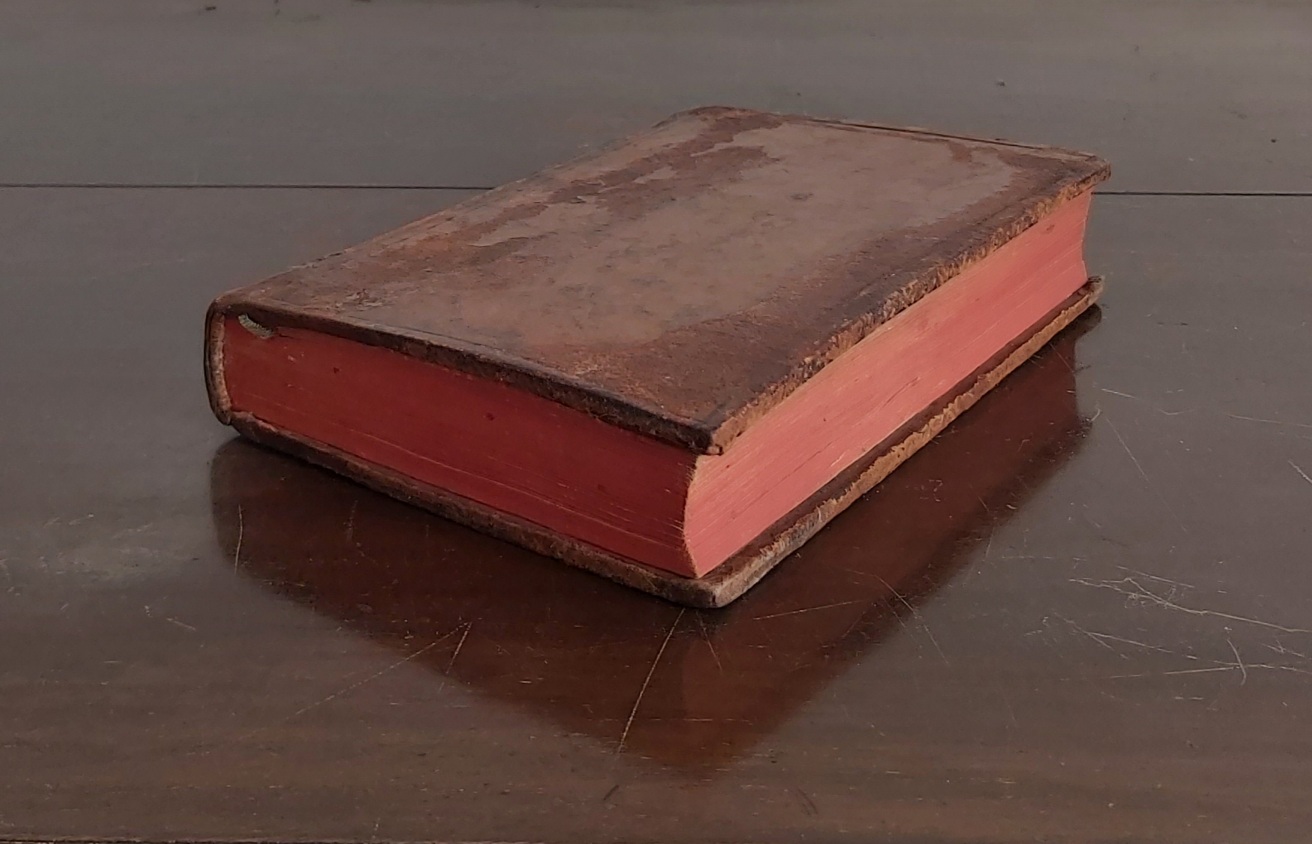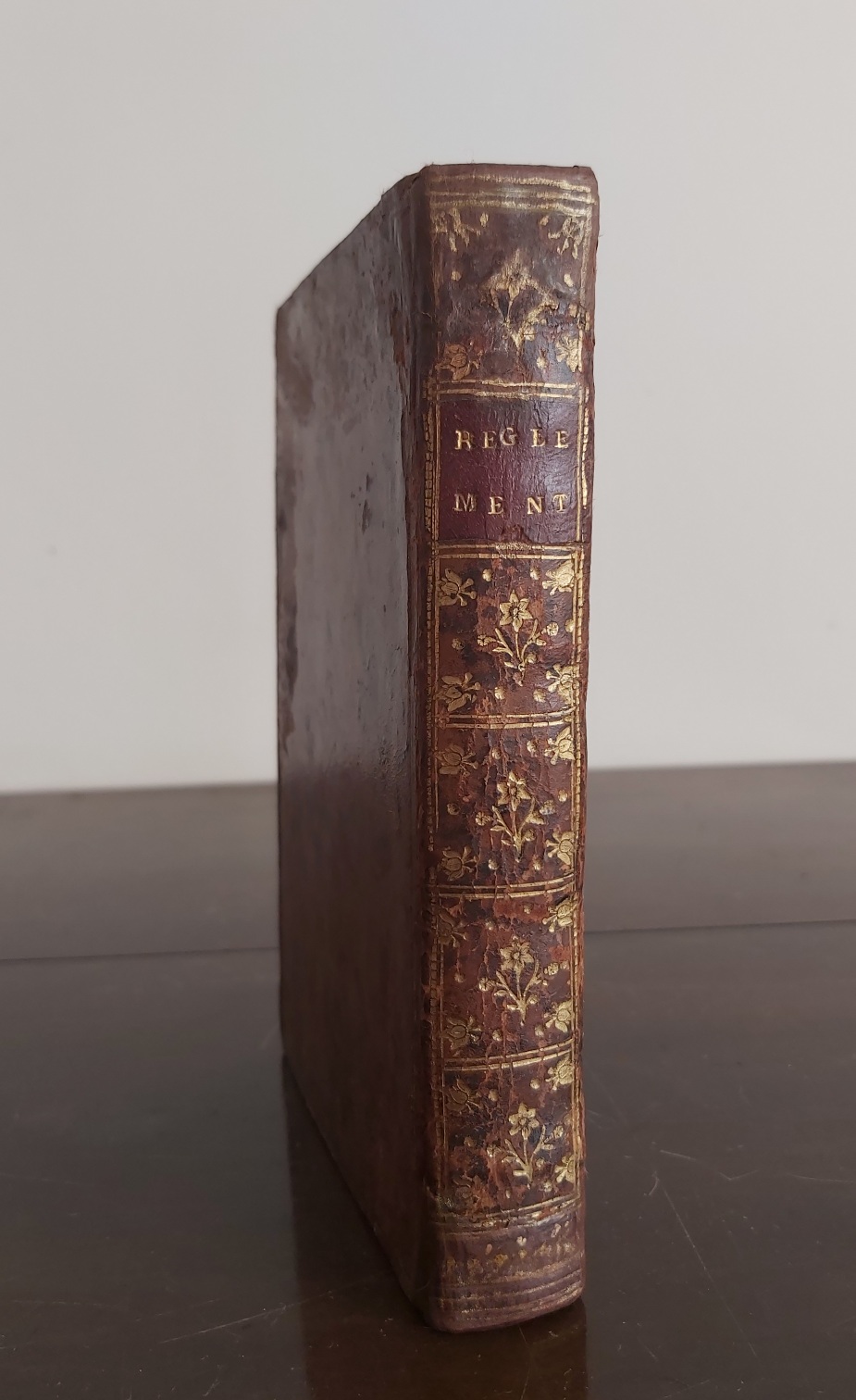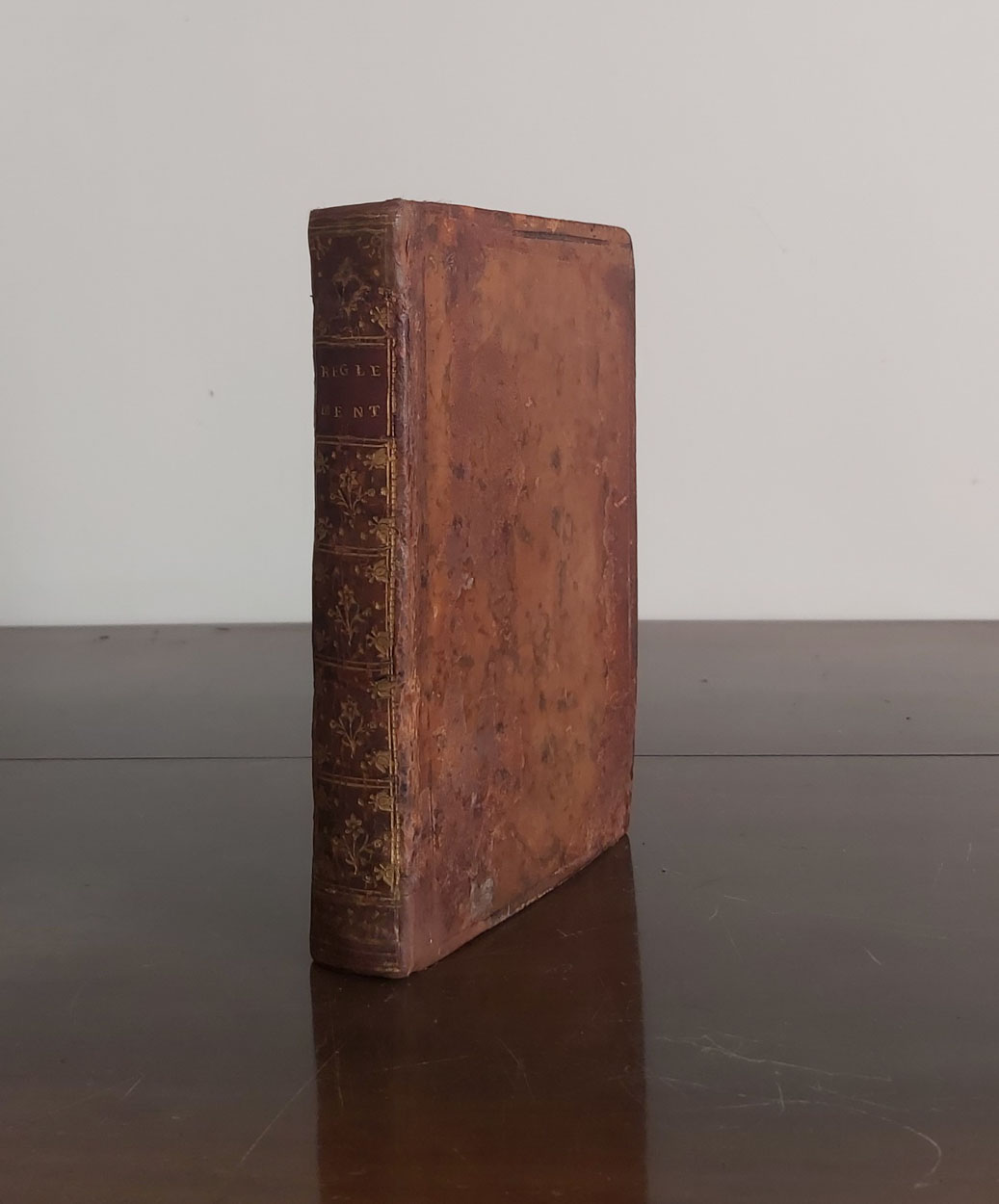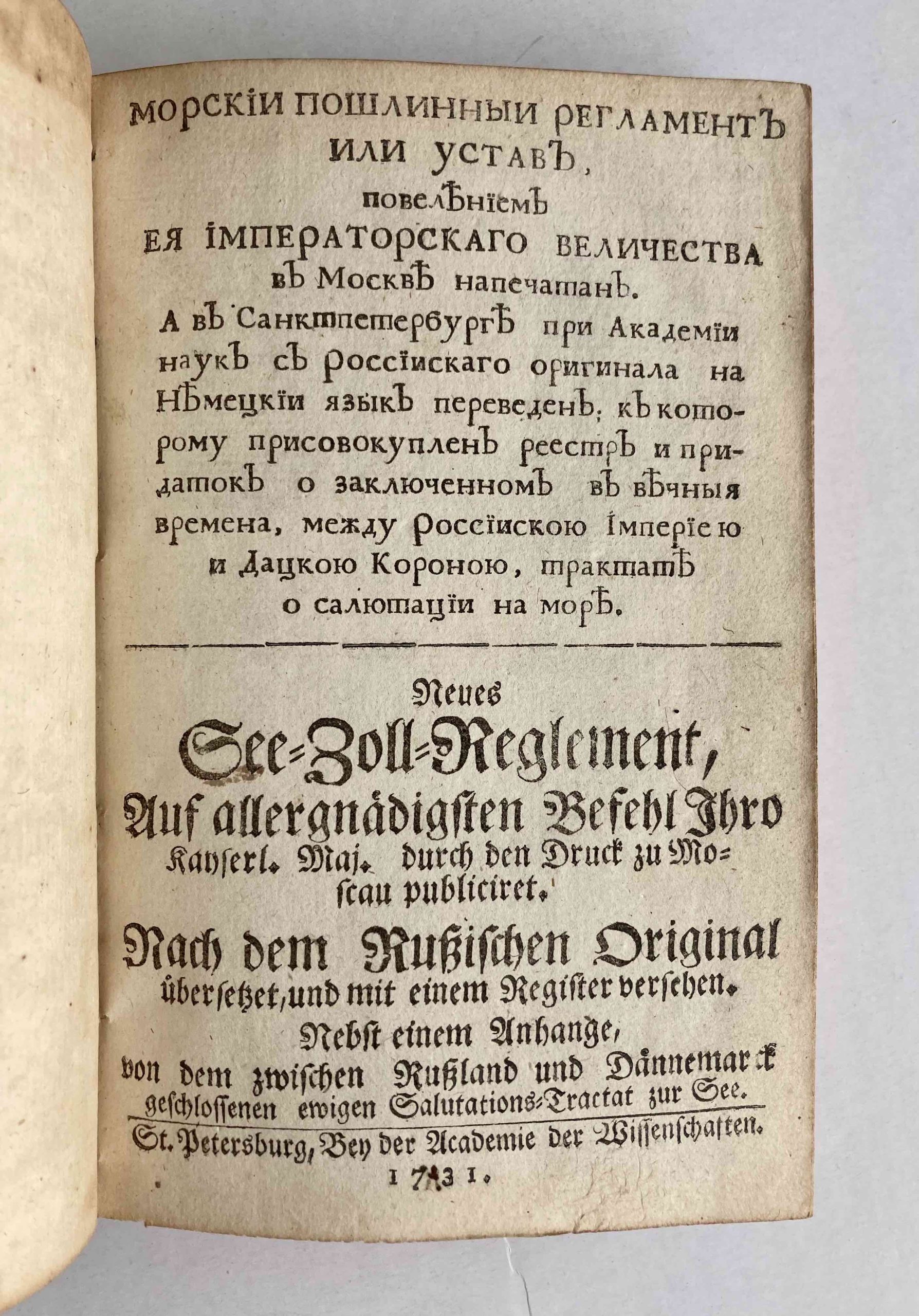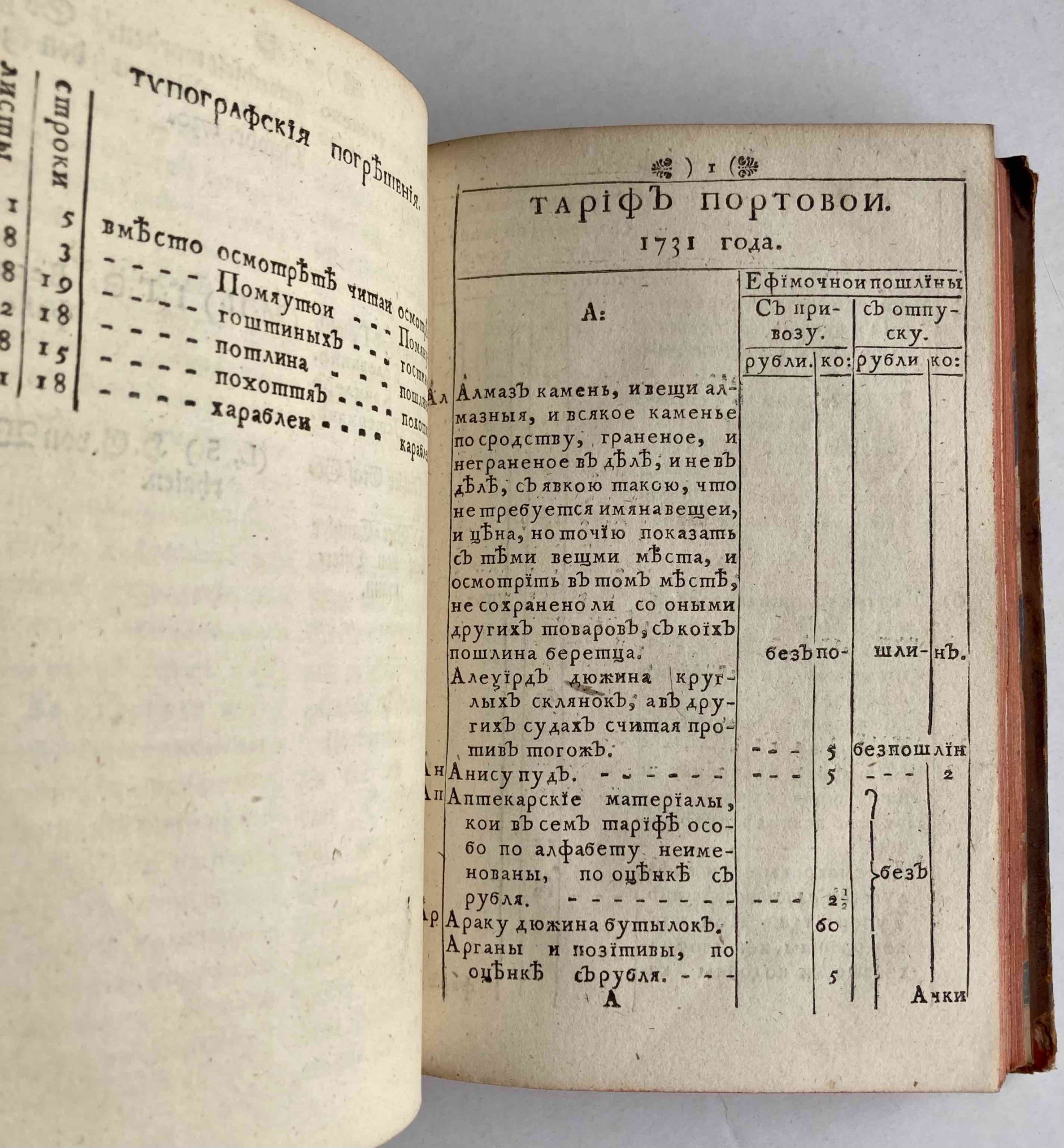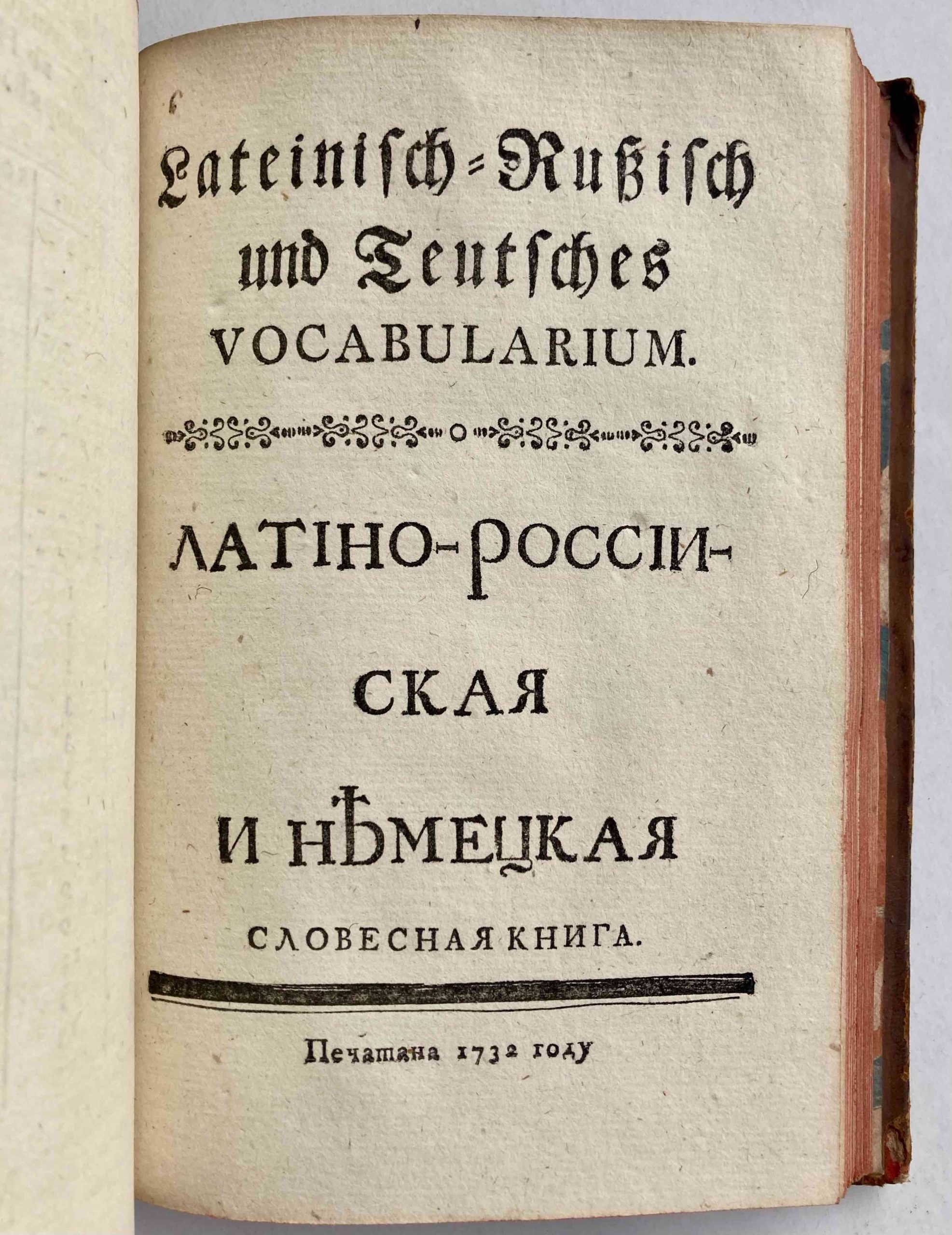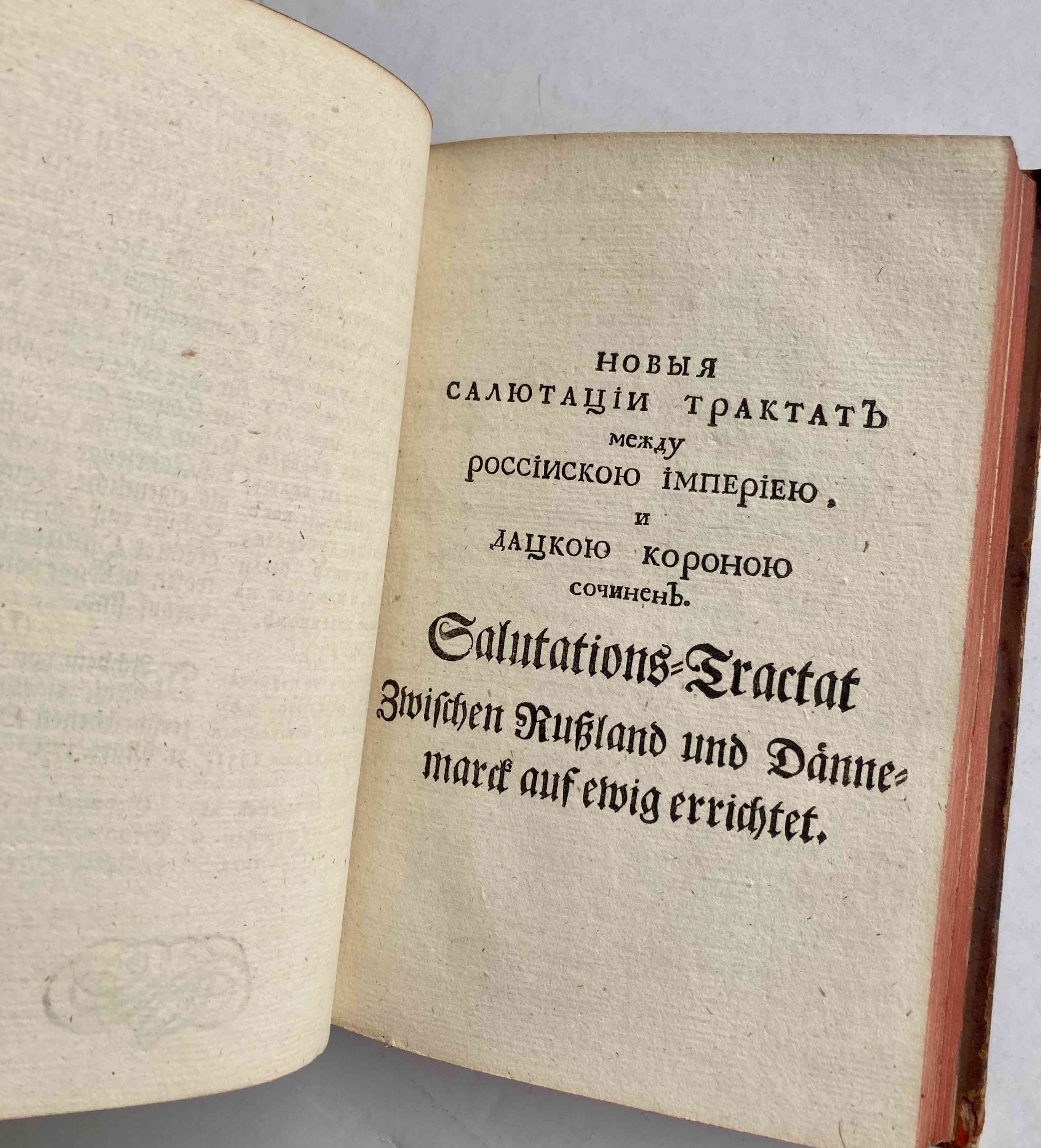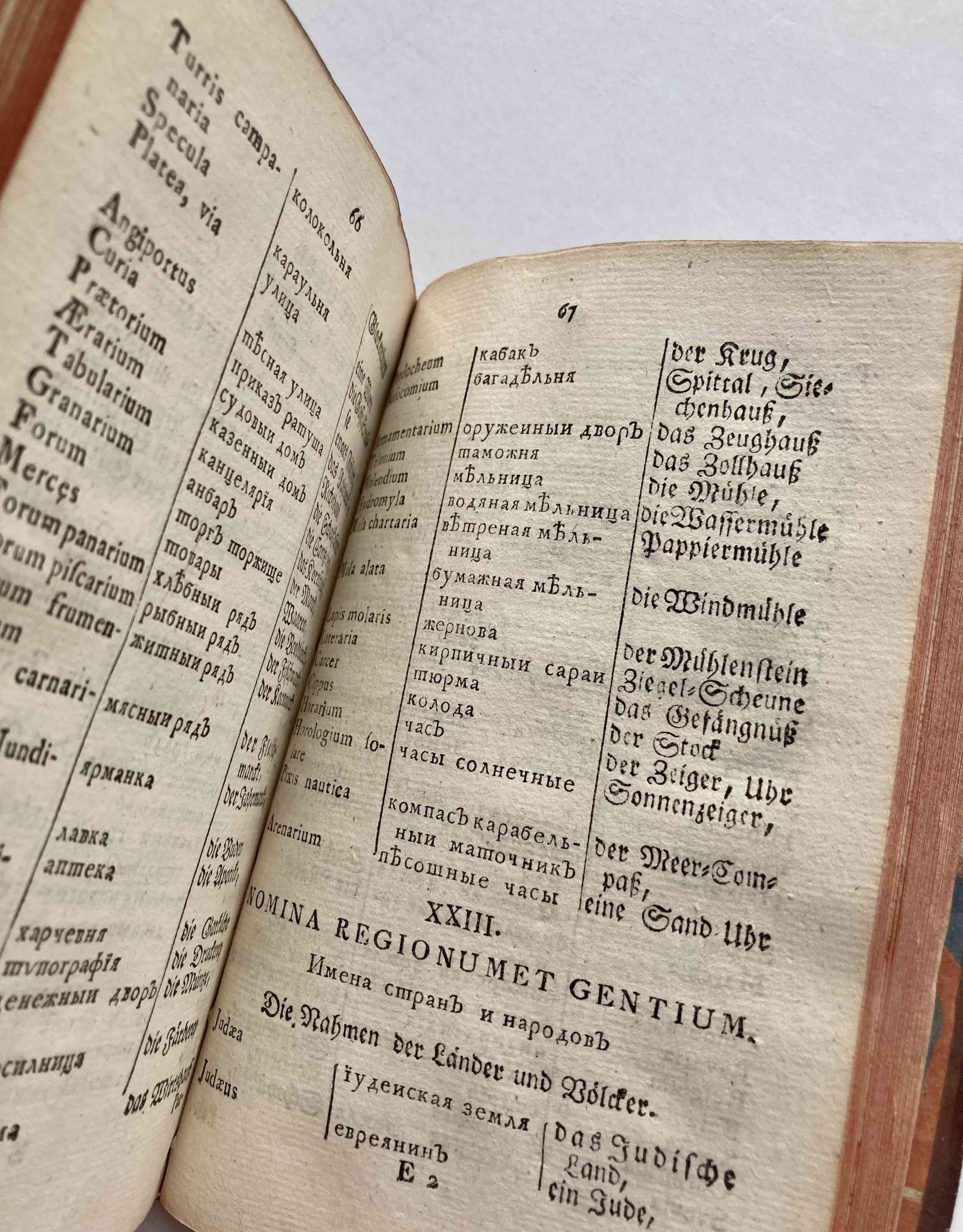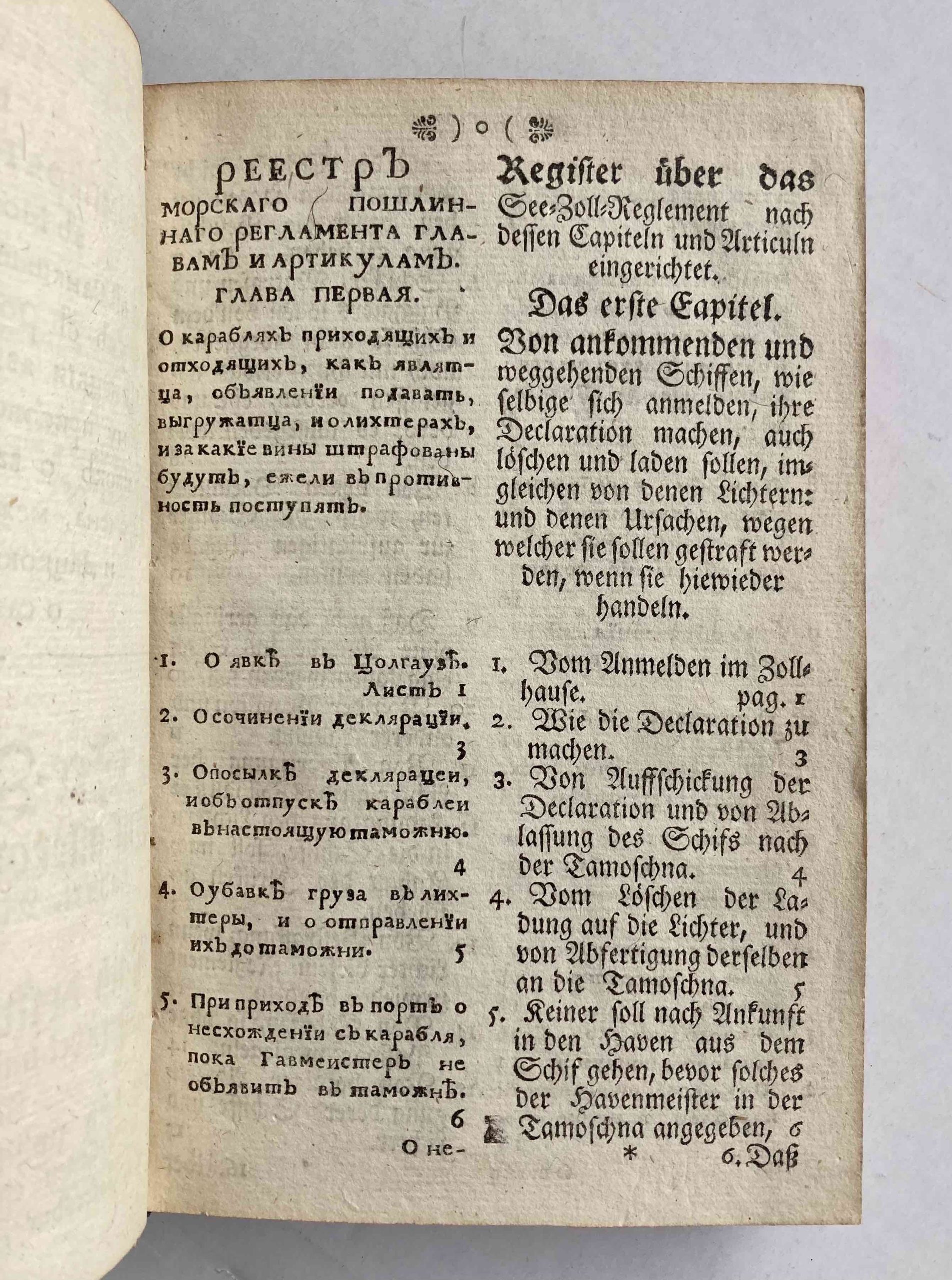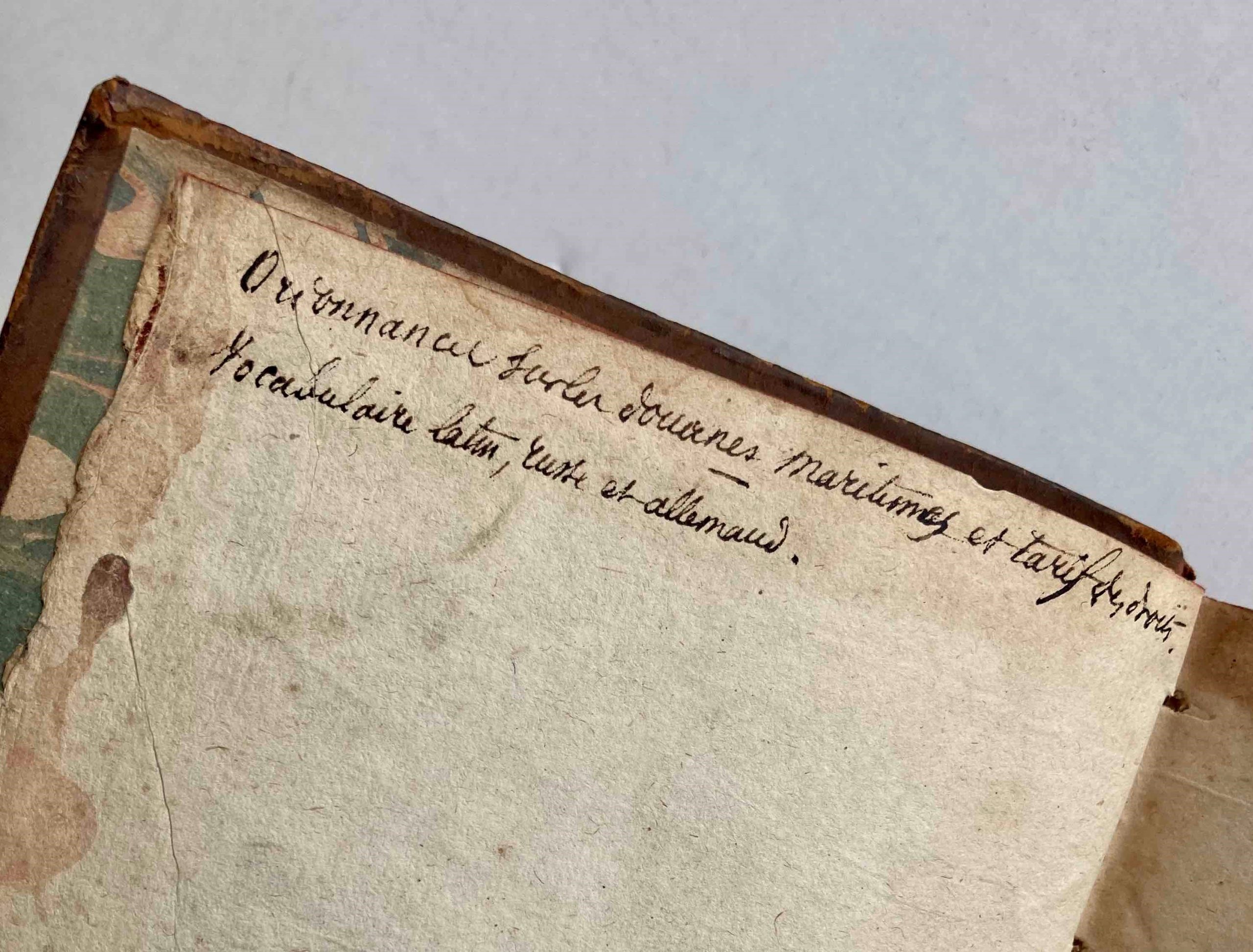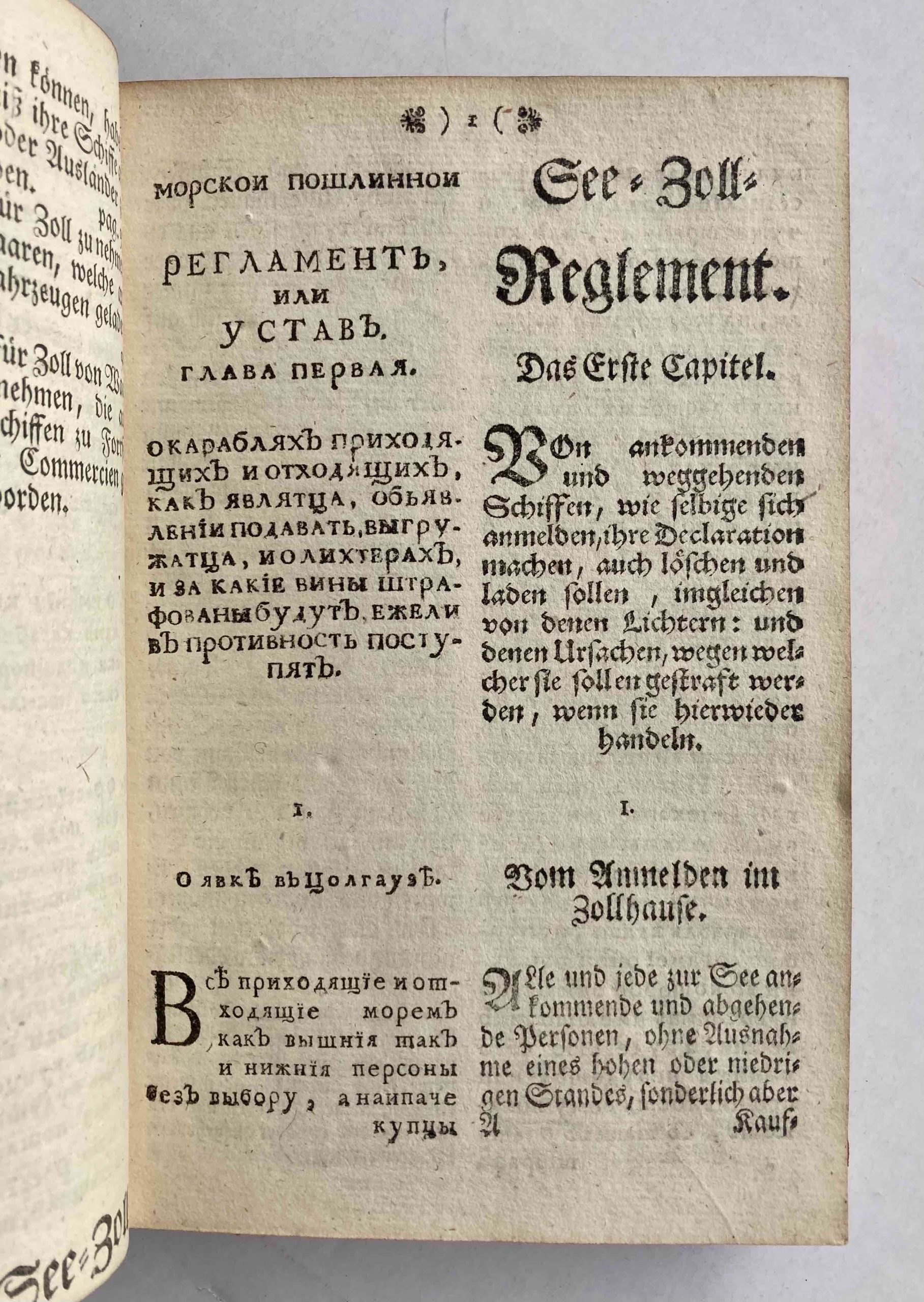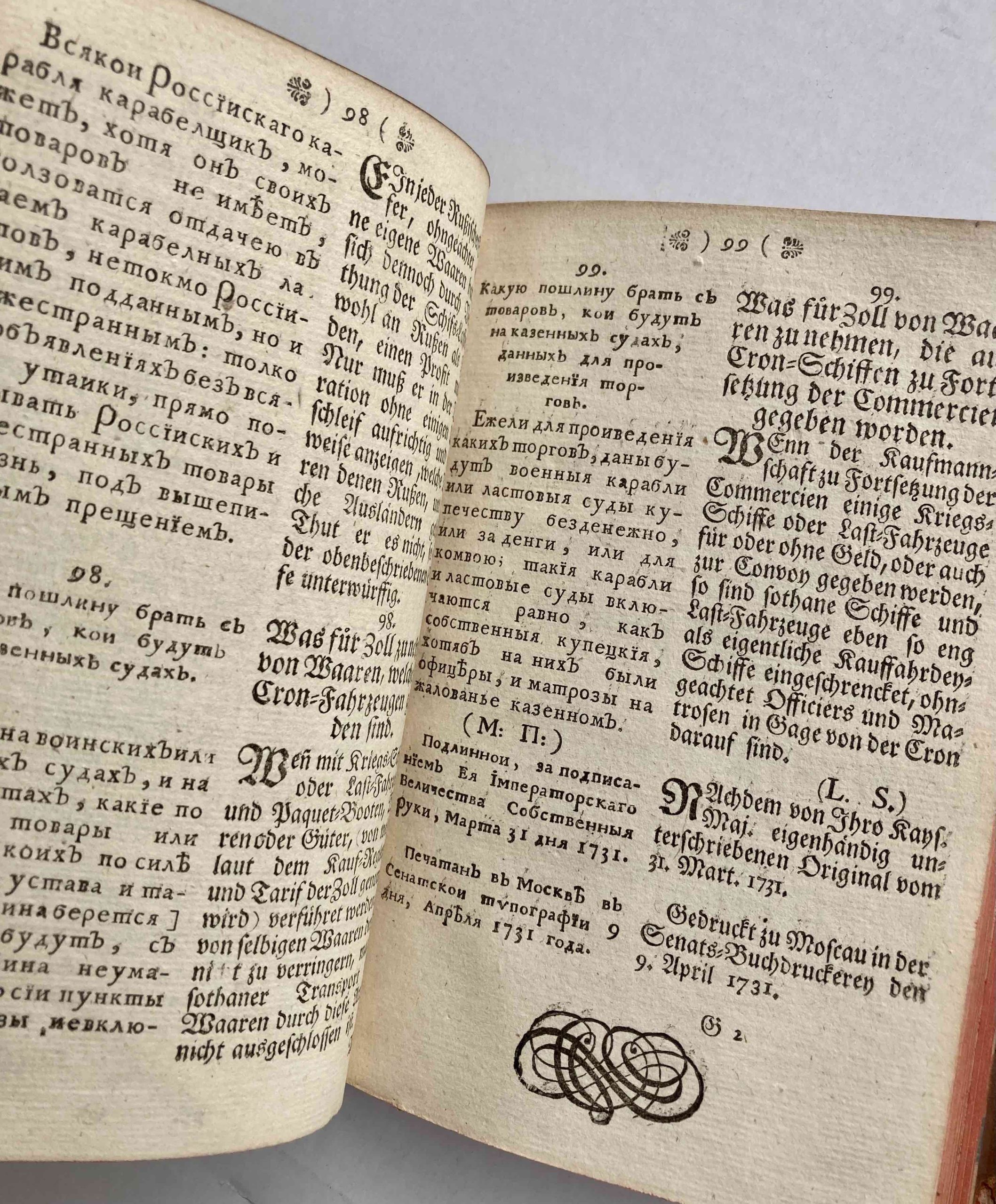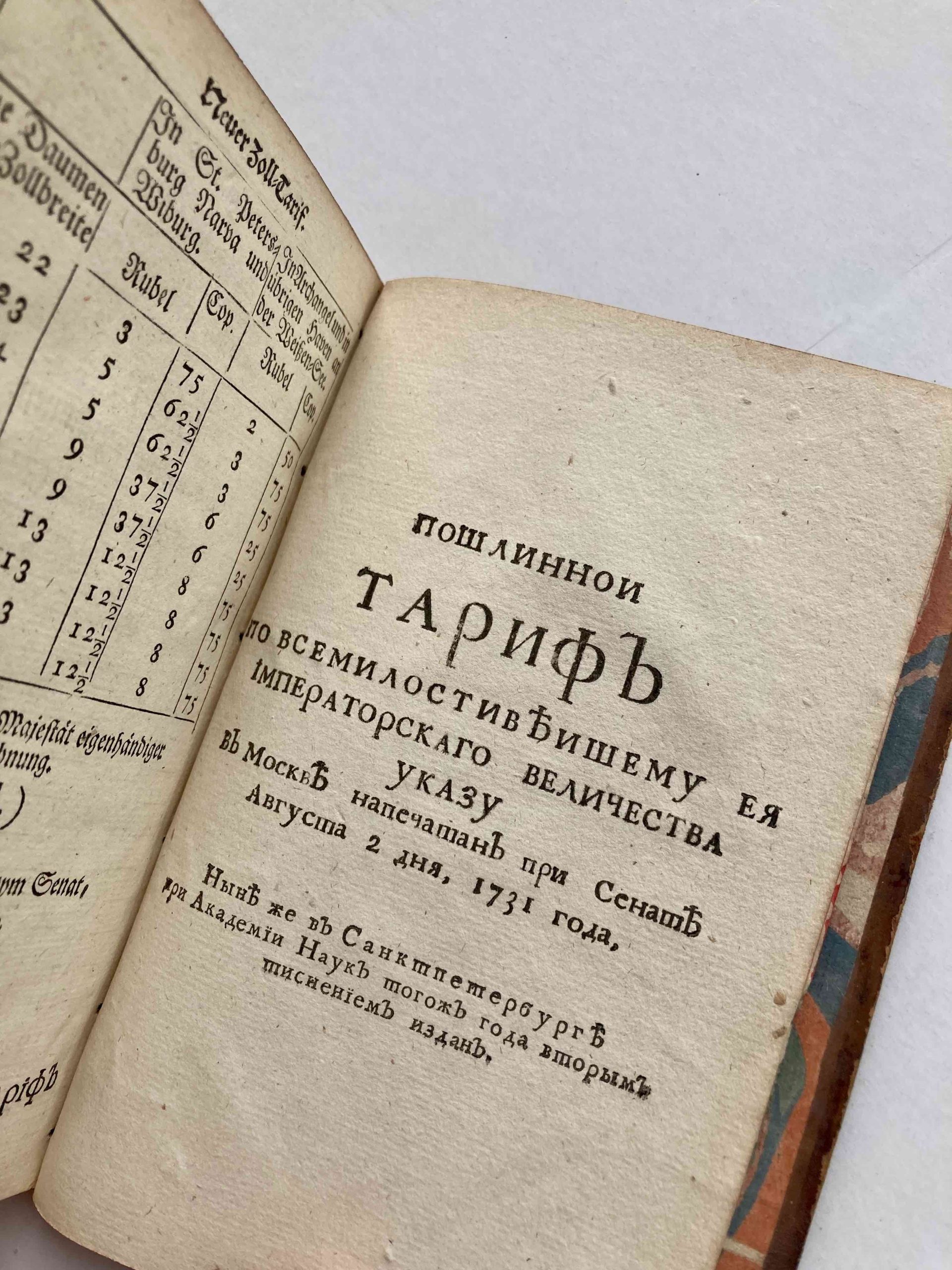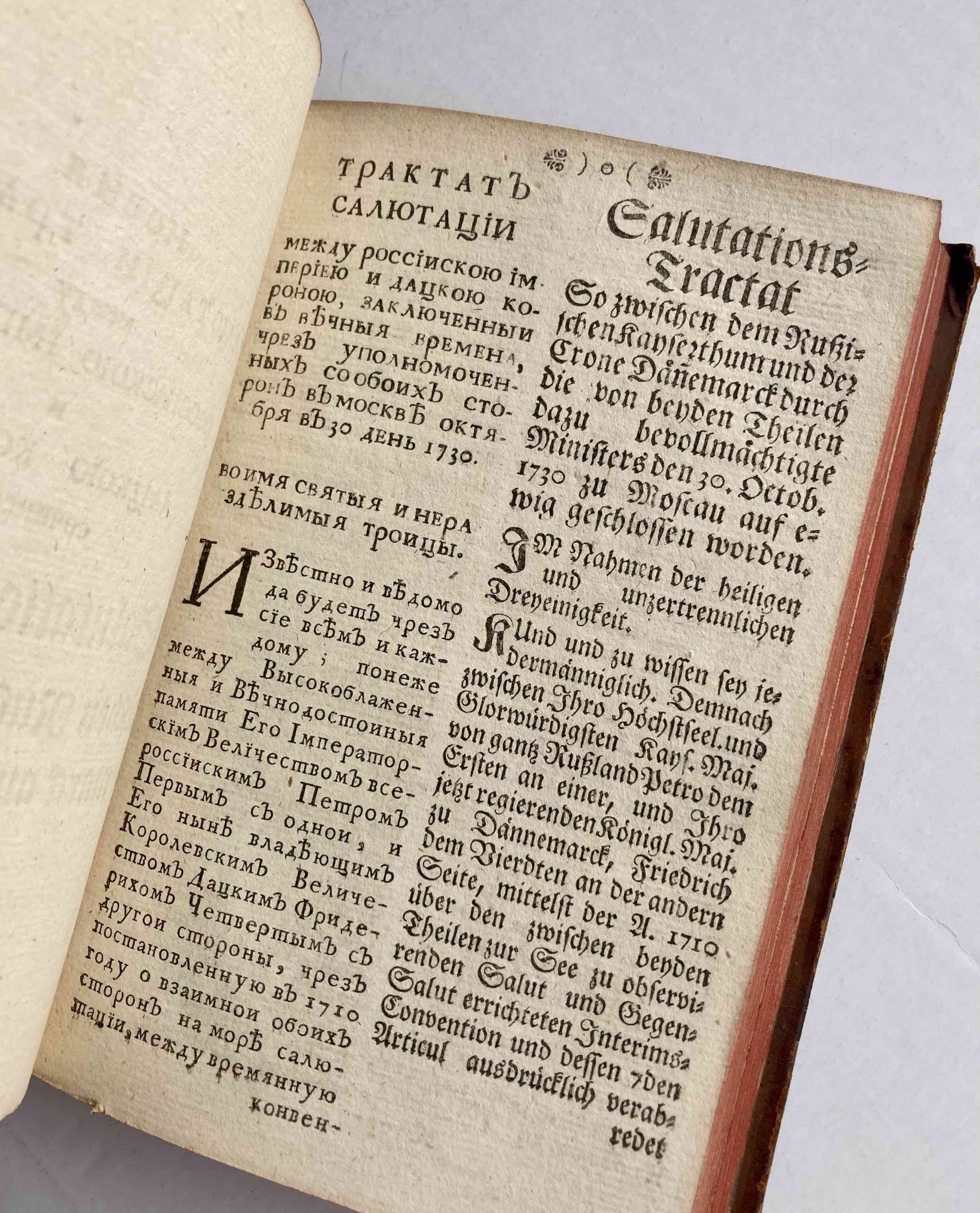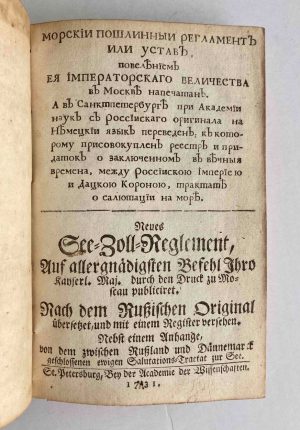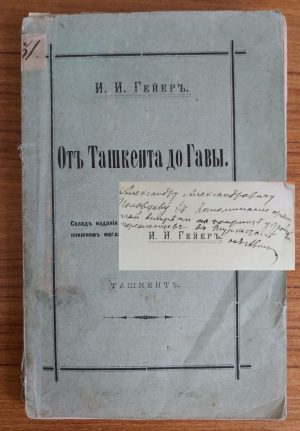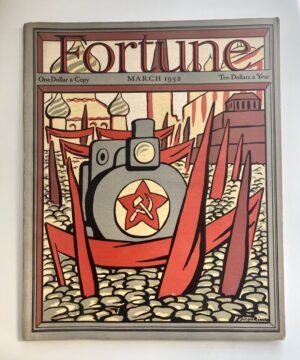Our Notes & References
A comprehensive sammelband for Russo-German sea trade under the Germanophile Tsarina Anna Ivanovna, containing three rare, early works: the first bilingual editions of the new duty statute and of the customs tariff, together with a trilingual dictionary.
A lovely, fresh example in contemporary binding.
Adopted in 1731, the Maritime Duty Statute regulated the entry and departure of foreign ships into Russian ports, as well as the procedures of loading and unloading their goods in order to solve smuggling issues, widespread in Russia at that time. The new statute changed and significantly developed earlier regulations introduced in Peter the Great’s famous Maritime Trade Regulations and Statute of 1724: the present edition lists 99 articles instead of 41 previously, adding much new content. For example, Anna’s statutes clarify for the first time the rights and obligations of both carriers and owners of goods, using the latest experience of the Russian collaboration with its European partners and ensuring a more stable flow of funds to the State treasury.
According to these new regulations, all ships had to notify the customs office of their arrival or departure; a customs office inspector was to be taken on every ship; goods were to be unloaded only on the basis of labels issued by customs and any withheld goods were subject to confiscation. It also specifies an interesting regulation already presented in 1724, forbidding to insult or beat up the customs’ representatives inspecting the ships; the punishment for this misbehaviour could range from a fine to a death sentence.
Anna’s new Statute was first published without title page in folio format on April 9th, 1731, in Moscow. Our edition followed shortly after the same year: it is the first bilingual edition and one of the very first Russian bilingual legal texts. Printed on “her majesty [Anna Ioanovna’s] order”, it presents both texts, in Russian and German, in parallel columns and in the convenient octavo format made for everyday use at sea and on land. The translation was made by the St. Petersburg Academy of Sciences, a recent institution which Anna supported and developed, in particular through an increased presence of German scholars. This translation appeared on its own in Hamburg the same year, without the Russian text, and three more Russo-German editions would be published between 1775 and 1816, with the same date of 1731 on the title page, but with different collations and layouts. Our edition is the true first.
The edition of the Statute includes at the end the “perpetual” treatise on the salutation on sea between Russia and Denmark. Signed in 1730, it consolidated the friendly relations of both former allies in the Great Northern War, highlighting the reciprocal interest in development of trade relations. The treatise also acknowledges the sea borders of both countries, listing the places where their ships could meet (mentioning even the possible appearance of the Russian fleet on the shores of Iceland) and then specifying how they would salute each other.
After the See-Zoll-Reglement, this lovely volume includes the separately published Customs Tariff, in German and Russian, and a trilingual dictionary Latin-Russian-German.
The Customs Tariff consists of tables of taxed objects for import and export, originally issued on the order of her majesty and published on August 2, 1731 in Moscow, in the folio format, in Russian only and without title page. It was quickly followed by this second printing, a St. Petersburg edition in a portable format together with the German translation; both texts are separate, each introduced by its own title page. They consist of tables presenting a wide range of goods in alphabetic order, as diverse as apples, caviar, cotton, Scottish fish, gold, silver, indigo, oil and feathers among many others.
Finally, the lovely (and pretty much untouched) dictionary is the work of the famous Ilia Kopievskii (1651-1714?), an important man of letters and innovator who began to print works in Cyrillic in Amsterdam following Peter the Great’s interest in the matter. His vocabulary was first published in the Dutch city in 1700 as Nomenclator in lingua latina, germanica et russica, before two St. Petersburg editions in 1718 (200 copies) and 1720 (600 copies) as Vokabuly ili rechi na slavenskom, nemetskom i latinskom iazykakh [Vocabularies or speeches in Slavonic, German and Latin].
Our 1732 edition is therefore the first under its title, and occurred at a time of increasing interest for the German language in Russia – fostered by Anna Ivanovna: a Grammatika nemetskaia [German grammar] with vocabulary and a Teutsch lateinisch und Russisches Lexicon had just been published in St. Petersburg in 1730 and 1731 respectively (the latter being wrongly described by the bibliographer Guberti as the “first Russo-German dictionary published in Russia”). As opposed to those however, our edition is of smaller, more practical format, and the text focuses rather on the most practical, but still very diverse topics for everyday use of Russian and foreign merchants and other travellers. Almost 100-page long, Kopievskii’s Vocabularium is divided into 47 thematic categories, such as religion, health, food, zodiac signs, names of the main Russian and German rivers, words for human physique etc., the latter being surprisingly detailed and including words for “dimples when a person smiles” or “nose hair”.
All three works belong to a very thin corpus of Russian books printed at that time: according to SK, only 11 Russian works (incl. ours) were printed in Russia in 1731, and only 15 in 1732 – it was still the dawn of Russian civil printing.
They are very rare: we could trace only 4 copies in total at auction in recent decades: two of the Statute in Russia and one only outside Russia in 2005 (bound with other works), and only the Macclesfield copy of the Tariff in 2006 – no example of the dictionary.
In institutions, although Worldcat locates several copies of the Statute dated 1731, we were not able to identify their true publishing date due to the lack of information; none of these copies, however, seem to have the Latin-Russian-German vocabulary or the Customs Tariff bound together. These are usually found separately: Worldcat locates only 3 copies of the Tariff in the US (Harvard, Berkeley and Yale), and 6 copies of the vocabulary, almost all in Germany, to which we could add one in Harvard, apparently the only one in the US, and one in the St. Petersburg RNB.
Bibliography
Statute: SK XVIII 4355; Bitovt 608; Sopikov 6321. Tariff: SK 7153; Bitovt 611; Goldsmiths 6899. Vocabularium: SK 3118.
Valentina Piliaeva, “Morskoi poshlinnyi ystav 1731”, Istoriia tamozhennogo dela i tamozhennoi politiki v Rossii.
Kislovskii Iu. Istoriia tamozhennogo dela i tamozhennoi politiki v Rossii, Moskva, Rusina press, 2004.
Balkovaiia V.G. Stanovleniie protsedur morskogo tamozhennogo oformleniia v Rossii (XVII-XVIII vv.).
Petriakov Sergei, Rossiisko-datskie peregovory i dvustoronniaia torgovlia v XVIII veke. // Teoriia i praktika obschestvennogo razvitiia, 2011, #8.
Physical Description
Octavo (17.4 x 11.8 cm). Statute: title, [14] t.o.c., 99, [28] pp. salutation; Tariff: German title, 64 pp., Russian title, 60, [2] pp.; Vocabularium: title, 104 pp., blank leaf.
Binding
Contemporary (French?) full mottled calf, flat spine gilt in compartments, red morocco label with gilt lettering, red edges, marbled endpapers. Kept in a modern card slipcase.
Condition
Covers with areas of abrasion, binding a bit restored at extremities, esp. head and foot of spine; text very fresh and crisp, the odd light stain, upper fly-leaf with manuscript inscription in French in brown ink about the book content.


